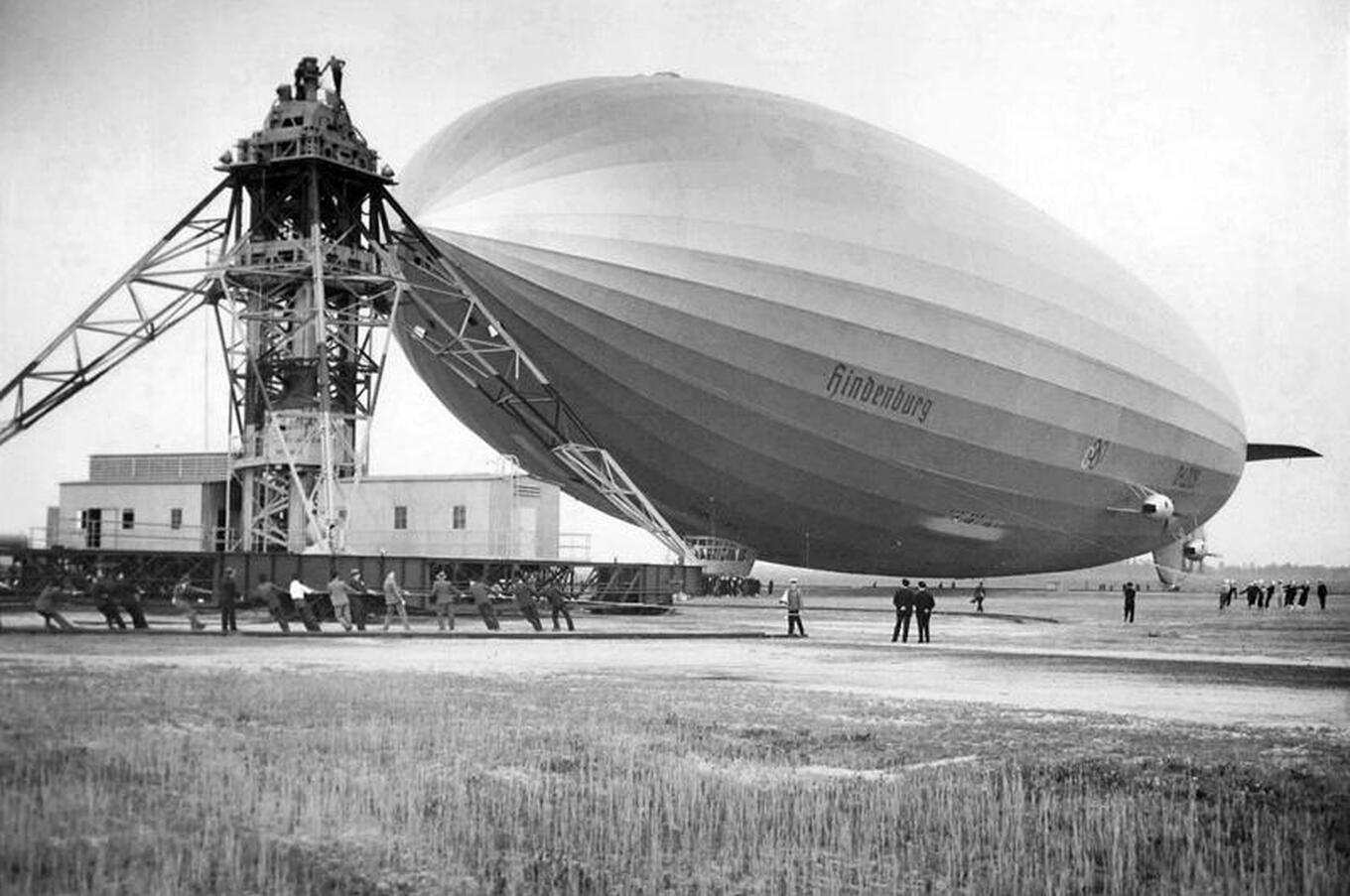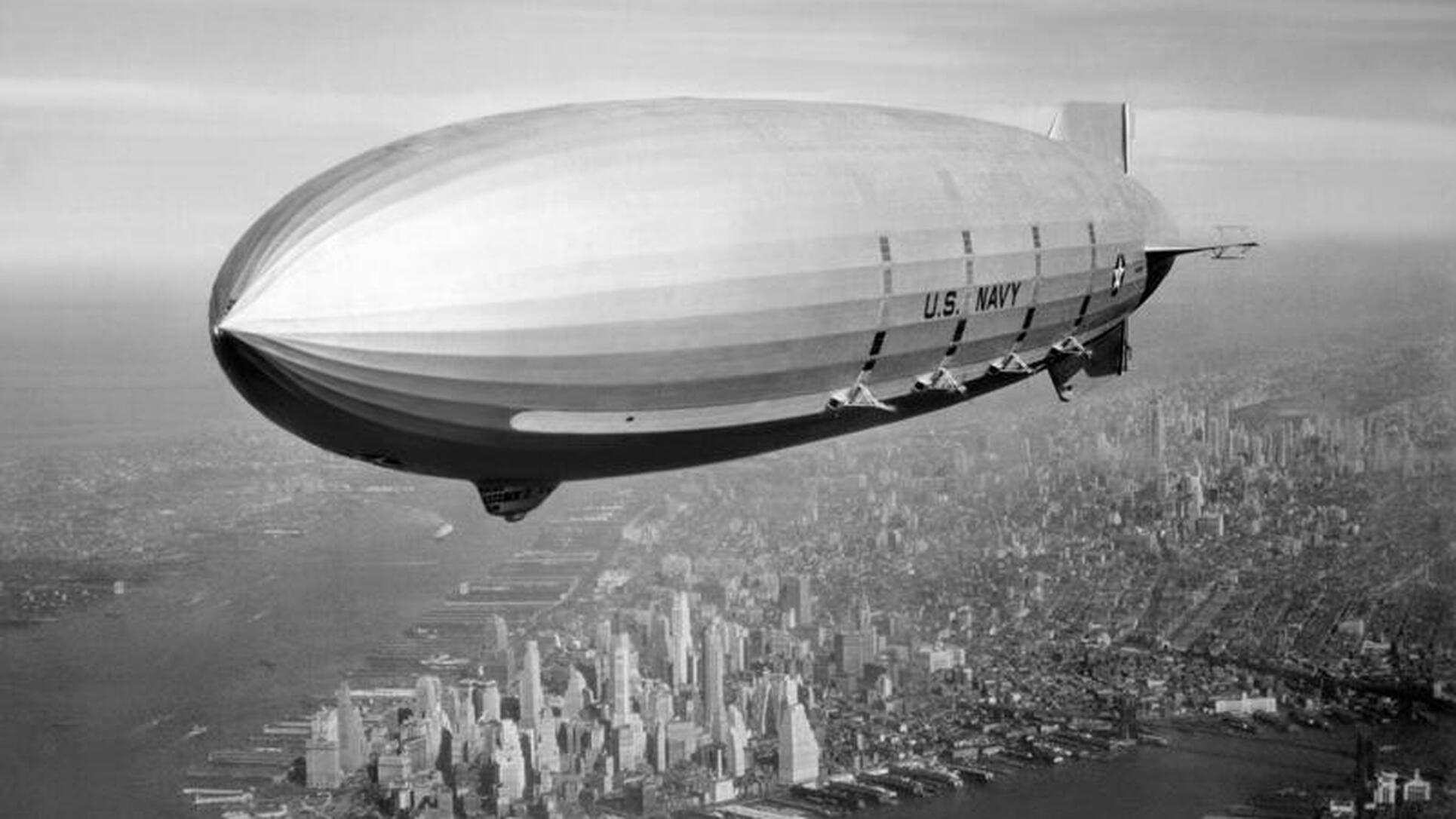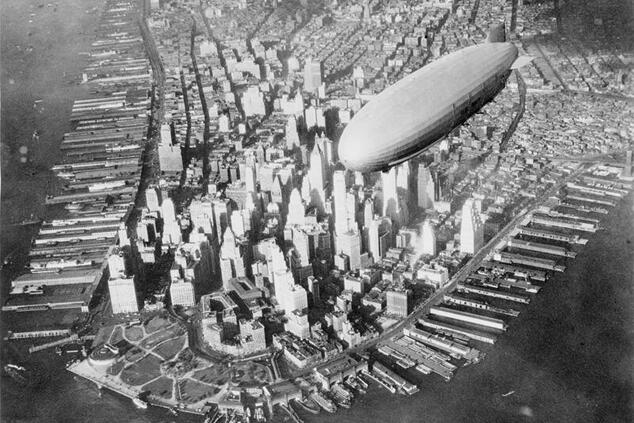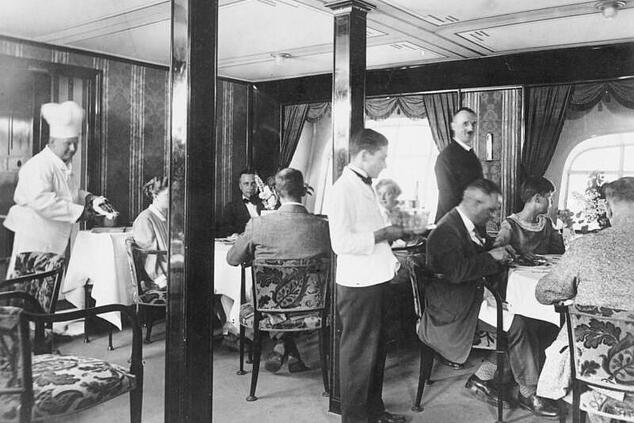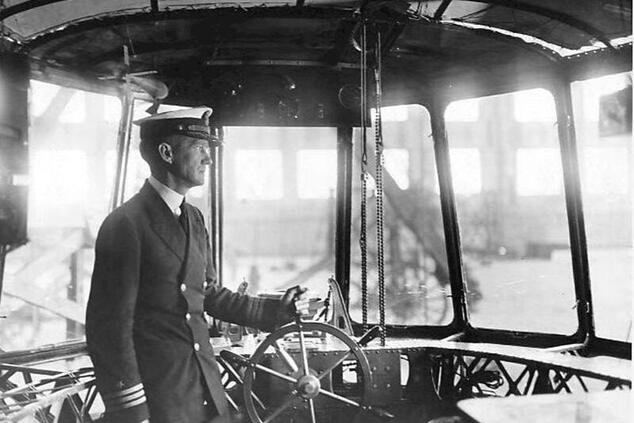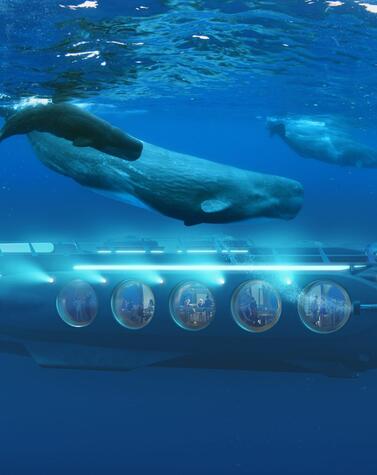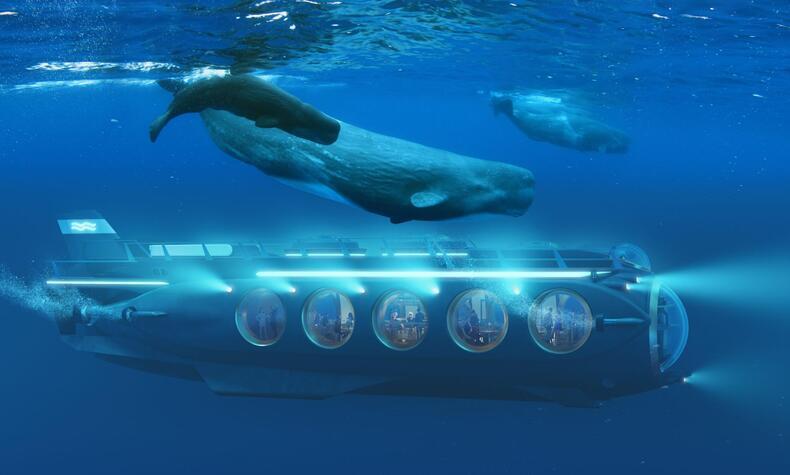The world's first airline
On November 16, 1909, the world's first airline, DELAG (Deutsche Luftschiffahrts-Aktiengesellschaft or German Airship Company), was established. Its first flight was made by the Bodensee airship between Berlin and Friedrichshafen in a record time of between 4 and 9 hours (compared to the previous 18-24 hour train journey).
In 1931, DELAG offered the first regular transatlantic passenger line between Germany and South America, with more than 136 flights in its lifetime. At that time, the only way to travel between Europe and America was on large passenger ships.
A trip to New York took, depending on the time of year, about 5 days. Despite the great luxuries on board that ships like the Titanic or the Queen Mary could offer, their voyages were not without swells, storms, seasickness, stumbling on board, and uncomfortable nights, all rarely shown in the movies.
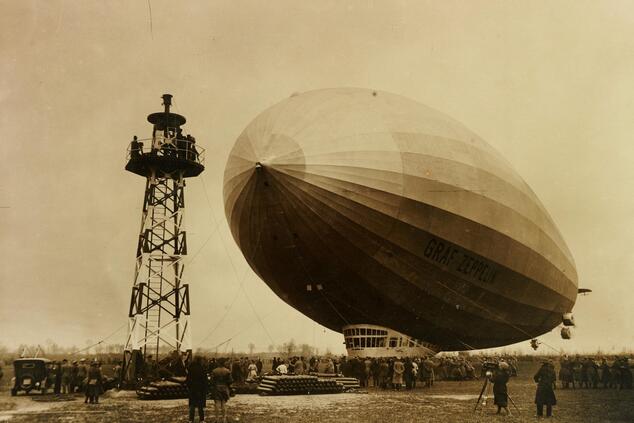
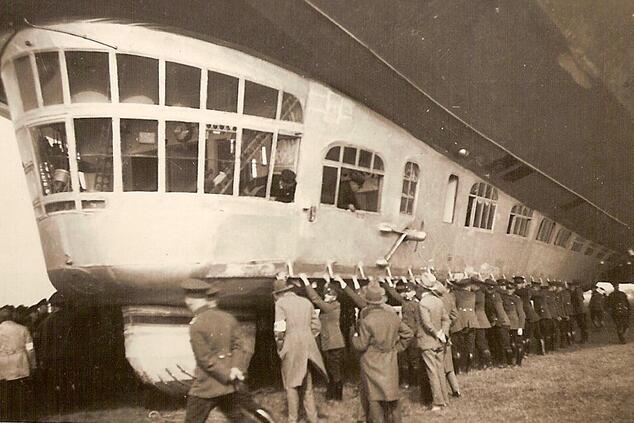
DELAG commissioned the construction of its fleet to the Zeppelin company, founded by Count von Zeppelin. This contract marked Zeppelin's big breakthrough as the world's leading manufacturer of the largest airships the world has ever known, at 245 meters long, it would be the equivalent of 3 back-to-back Boeing 747 aircraft.
Today, we would still, as they did in the old days, go out into the street and gasp at the sight of the colossal size of an airship. Between 1910 and 1914 (World War I stopped passenger traffic), DELAG made more than 1,500 flights and carried more than 34,000 passengers, making air travel the safest of all.
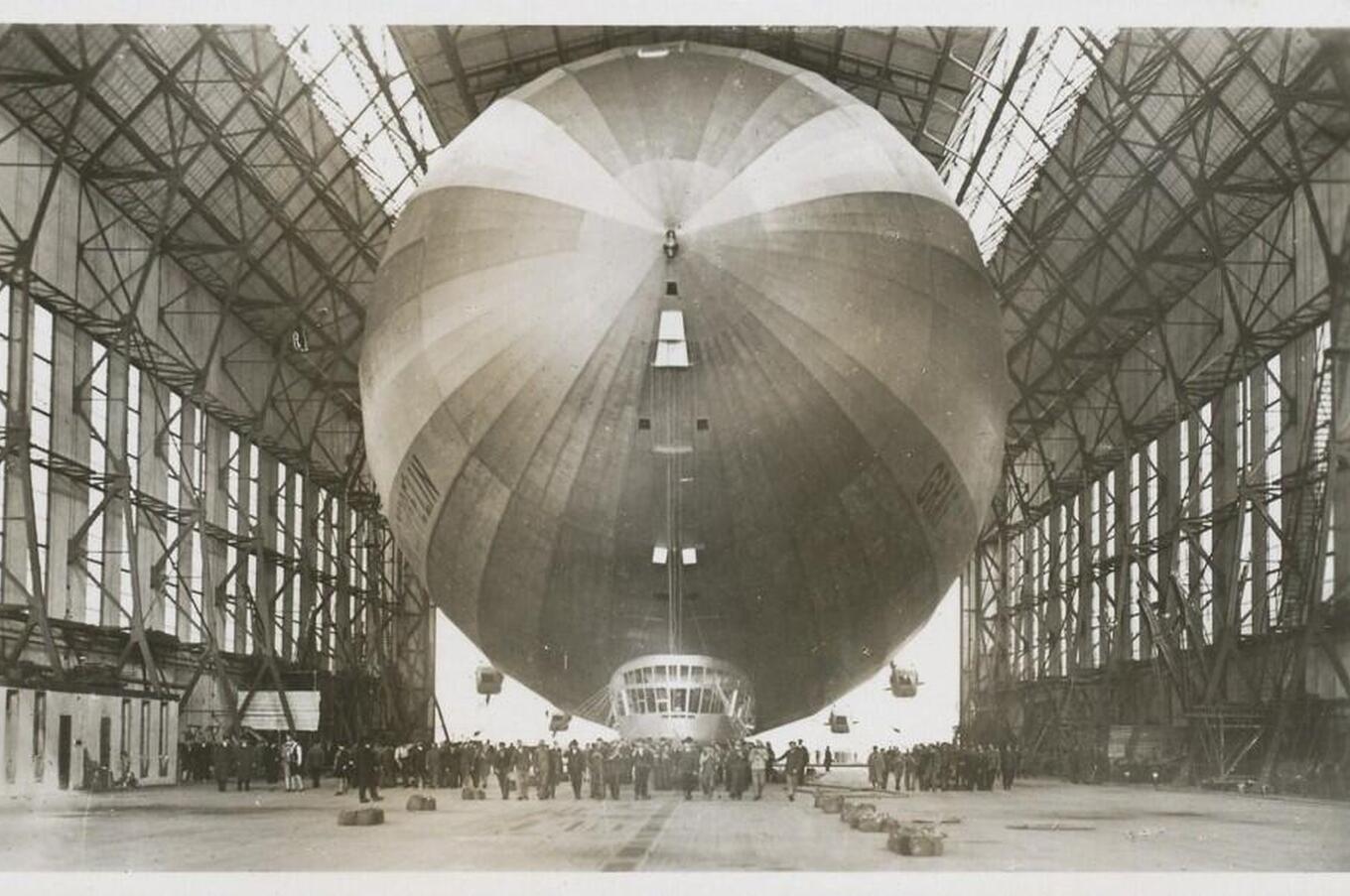
Life on board
The airships carried between 50 and 70 passengers and a crew of about 60 people, flying at an incredible speed of about 135 km/h. In addition, they had a large structure equipped with living rooms, cabins with bunk beds, bathrooms, dining rooms, and even a smoking lounge.
The ticket covered all meals and beverages, as well as luggage, including handbags, suitcases, and a trunk with the essentials for the final destination. The total weight of luggage allowed per person was 126 kilograms, much less than that of any boat trip at the time. These airships, modern for their time, had a sophisticated system for sending and receiving telegrams on board where business travelers could communicate with their respective offices or clients in real-time.
Imagine what it must have been like the first time the general public was able to see the world from the air.
- A blimp flying over Manhattan in 1932 —
- Although it lacked the luxuries of one of the great ocean liners of the time, airship travel was faster and more economical —
- The ride was comfortable and quiet, with no turbulence due to the low altitude —
- The Zeppelin reached a top speed of 128 km/h (80 mph)
In the 1930s, airships flew all over the world and were the fastest and most efficient means of transportation at the time. Their engineering was once the most advanced in the use of aluminum and aerial navigation techniques.
In 1937, the Hindenburg crash claimed the lives of 35 people out of a total of 97 passengers. It was the first accident to be televised live. The impact that the images had on the public, who were accustomed to reading about events but not seeing them, was so great that it meant the end of the era of large airships.
100 years later, commercial aviation is a reality that presents us with new dilemmas. Will airships ever take to the skies again?
